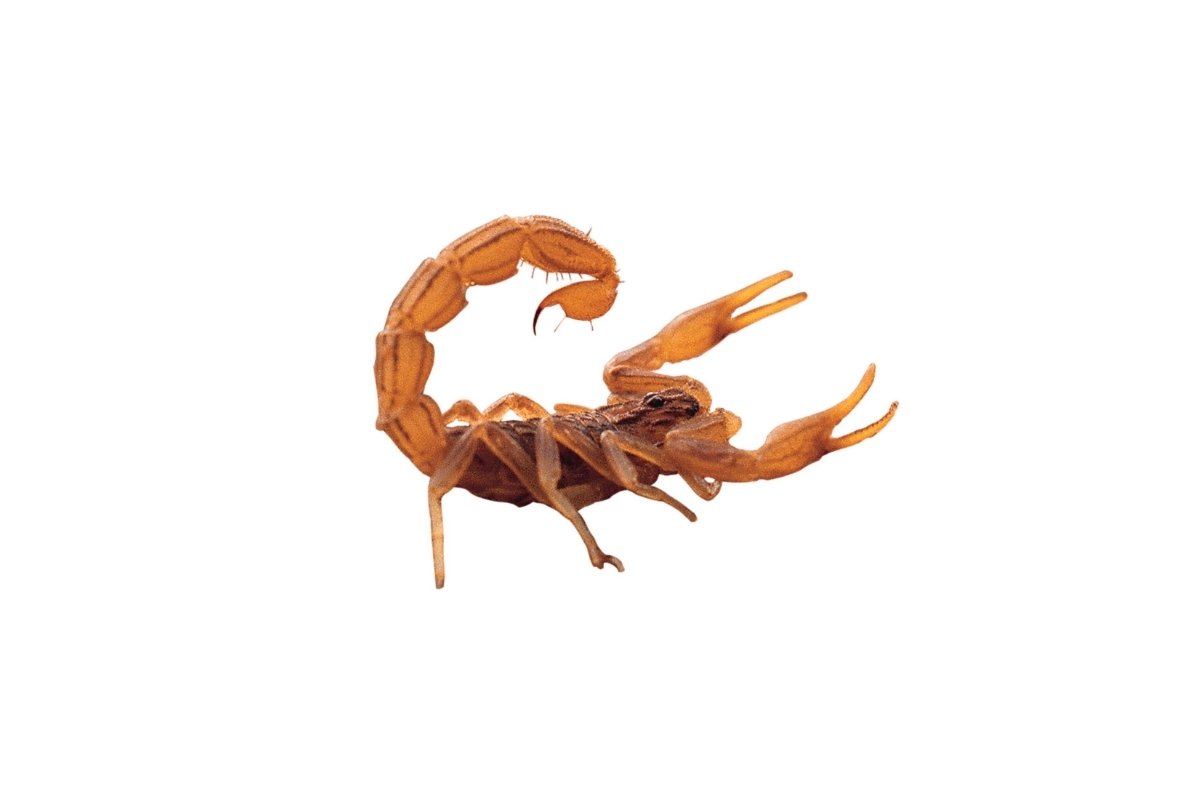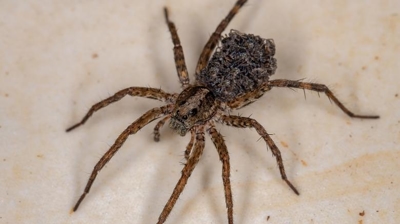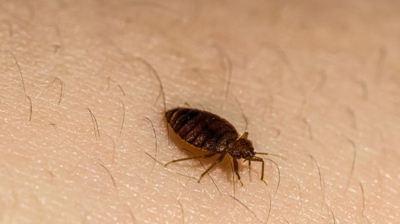
Scorpion Control Services

Scorpions
Scorpions can be harmful in several ways, primarily due to their venom, aggressive behavior when provoked, and their potential to infest homes and businesses. Here are the main concerns associated with scorpions:
Venomous Stings
Most scorpions possess venom, which they use to subdue prey and defend themselves. While the majority of scorpion stings cause only mild pain, swelling, and irritation, some species—such as the Arizona bark scorpion (Centruroides sculpturatus)—can deliver venom potent enough to cause severe reactions, including:
- Intense pain and swelling
- Numbness or tingling
- Muscle spasms or twitching
- Breathing difficulties (in extreme cases)
- Systemic allergic reactions, including anaphylaxis in sensitive individuals
Children, the elderly, and those with compromised immune systems are more susceptible to severe symptoms.
Allergic Reactions
Even in cases where the venom is not highly toxic, some people may have allergic reactions to a scorpion sting. This can range from mild itching to life-threatening anaphylaxis, requiring immediate medical intervention.
Psychological Distress
The presence of scorpions in homes or workplaces can cause significant psychological distress. Many people fear scorpions due to their appearance, unpredictability, and potential to sting, leading to anxiety, sleep disturbances, or even phobias.
Infestations in Homes and Businesses
Scorpions seek shelter in dark, cool places, making them common intruders in homes, storage areas, and commercial buildings. They hide in:
- Shoes, clothing, and bedding
- Cracks and crevices in walls or foundations
- Woodpiles, rocks, and debris near structures
A scorpion infestation can lead to repeated stings and discomfort.
Harm to Pets
Scorpions can pose a threat to household pets, particularly small dogs and cats, which may be curious or try to play with them. A sting can cause pain, swelling, and in some cases, severe reactions similar to those in humans.
Learn more: Do Scorpions Bite? || Scorpions Sting || What Do Scorpions Eat?
Scorpion Removal
Scorpions pose more risks than many people realize, which is why removing them from homes and commercial properties is so important. Their sting can cause significant pain, swelling, and in some cases serious medical reactions—especially for children, older adults, and pets. Even species considered “non-lethal” can trigger dangerous allergic responses or lead to secondary infections if the sting breaks the skin. Beyond the health concerns, their presence usually indicates other issues, such as excessive moisture, structural gaps, or underlying pest activity that scorpions rely on for food. Left unaddressed, these conditions allow populations to grow and move deeper into living spaces.
They also tend to hide in shoes, bedding, storage areas, and dim corners, which increases the likelihood of accidental contact. That creates a persistent hazard in homes, rental properties, and workplaces, and it can negatively affect quality of life by generating stress and disrupting sleep. For businesses, especially those in hospitality or child-focused environments, even a single sighting can damage reputation and lead to costly complaints. Removing scorpions and correcting the conditions that attract them restores safety, prevents recurring infestations, and ensures the environment stays comfortable and predictable for everyone who uses it.
Learn more: How To Get Rid Of Scorpions
Scorpion Control
Hiring our professional pest control for scorpions is strongly recommended because scorpions are not just a nuisance—they can be dangerous, difficult to eliminate, and persistent. Here’s why our professionals are your best option:
- Expert Identification and Knowledge: Not all scorpions are the same. Different species vary in venom potency, habits, and habitats. Our professionals can correctly identify the species and determine the risk level, which informs the safest and most effective control strategy.
- Targeted Treatment Plans: Scorpions are elusive and hide in cracks, under rocks, in woodpiles, and other secluded areas. Our professionals have access to specialized insecticides and treatment methods that are much more effective than store-bought sprays. Treatments are designed to not just kill visible scorpions, but also target their hiding spots and reduce future infestations.
- Safety Considerations: Handling scorpions, especially venomous species, carries a real risk of stings that can cause severe pain, allergic reactions, or medical emergencies. Our professionals are trained to safely handle and apply chemicals, minimizing risk to your family, pets, and property.
- Long-Term Prevention: Our professionals don’t just kill scorpions—they help prevent re-infestation by sealing entry points around your home, reducing conditions that attract scorpions (removing debris, fixing moisture issues), and advising on landscaping and property maintenance that discourages scorpion activity.
- Effectiveness and Efficiency: DIY methods often fail because scorpions are nocturnal, reproduce quickly, and can survive in hidden areas. Our professional treatments are far more likely to eliminate the infestation and prevent recurring problems.
- Peace of Mind: Knowing our trained expert has assessed and treated your home provides reassurance that your family and pets are safe. Our professionals can monitor the situation and provide follow-ups if needed, ensuring the problem doesn’t return.
Scorpions are stealthy, potentially dangerous, and difficult to eradicate without expert knowledge. Our professional pest control ensures safe, thorough, and long-lasting results, which DIY efforts often cannot achieve.
Scorpion Exterminators
Our local exterminators generally deliver far better results with scorpions because we consistently work in the same micro-climates, soil conditions, and seasonal cycles that drive scorpion behavior. We know exactly which species are common in the area, how they move through structures, where they typically hide, and what environmental factors are drawing them in. That local pattern-recognition translates into faster identification, more precise treatment, and far fewer return visits. National companies usually rely on broad, standardized programs designed to work “everywhere,” which often leaves gaps in effectiveness when dealing with a pest as niche and region-specific as scorpions.
Our local team also conducts more detailed inspections because our reputation depends on personal referrals and community standing. We seal entry points, assess harborage zones, and tailor products or application methods to the construction style of homes in the area. That level of customization is critical because scorpions can exploit even tiny structural weaknesses, survive many over-the-counter chemicals, and often require targeted, habitat-focused control. With our local team, you’re working with technicians who understand those nuances and are invested in long-term prevention. The result is a more reliable solution, greater accountability, and a safer property with less risk of recurring activity.
What Do Scorpions Look Like?
Scorpions are arachnids characterized by their distinctive appearance, which includes several key features:
- Body Shape: Scorpions have a segmented body with two main parts: the cephalothorax (head and thorax combined) and the abdomen. Their bodies are elongated and flattened, with a narrow, segmented tail at the posterior end.
- Pincers: At the front of their cephalothorax, scorpions have two large, lobster-like pincers called chelicerae. These pincers are used for capturing and immobilizing prey.
- Stinger: The most recognizable feature of scorpions is their curved tail, which ends in a venomous stinger or telson. The stinger is used for injecting venom into their prey to subdue or kill it. While the stinger is typically curved upward, its shape can vary between different scorpion species.
- Number of Legs: Scorpions have eight legs, just like other arachnids such as spiders, but they are larger and more robust in comparison.
- Coloration: Scorpions come in various colors, depending on the species. They can range from pale yellow or tan to dark brown or black. Some scorpions have patterns or markings on their exoskeleton.
- Size: Scorpion size varies among species, but most are relatively small, with an average length of 2 to 4 inches (5 to 10 centimeters). However, some species can grow significantly larger, with lengths of up to 8 inches (20 centimeters) or more.
- Sensory Organs: Scorpions have several pairs of eyes, typically arranged in a pattern on the front of their cephalothorax. However, their eyesight is usually poor, and they primarily rely on their other sensory organs, such as specialized hairs and sensory structures on their legs, to navigate and locate prey.
There are over 2,000 different species of scorpions, each with its own variations in appearance. Additionally, scorpions can adapt to their environments, which may influence their coloration and size. Overall, scorpions are well adapted to their predatory lifestyle, with their unique body structure and venomous stinger being key adaptations for hunting and defense.
Where Are Scorpions Found?
Scorpions are found in various regions around the world, and their distribution is influenced by factors such as climate, habitat, and ecosystem. Here are some common places where you might find scorpions:
- Deserts: Scorpions are often associated with desert environments, where they are well-adapted to the arid conditions. Desert regions in North America, such as the southwestern United States (Arizona, New Mexico, Nevada), the Sonoran Desert, and the Mojave Desert, are known for their scorpion populations. Similarly, scorpions can be found in deserts in Africa, the Middle East, and Australia.
- Tropical and Subtropical Areas: Scorpions are also prevalent in tropical and subtropical regions. Countries in Central and South America, as well as parts of Southeast Asia and the Caribbean, have diverse scorpion species. These regions typically provide the warmth and humidity that scorpions thrive in.
- Grasslands and Savannas: Some scorpion species inhabit grasslands, savannas, and scrublands. These environments can be found in various parts of the world, including Africa, South America, and parts of North America.
- Caves and Burrows: Scorpions are known to seek shelter in natural underground cavities, including caves and burrows. They are often encountered in these dark, secluded spaces.
Urban and Suburban Areas: Scorpions can adapt to human-altered environments and may be found in and around buildings, particularly in warm and dry climates. They often hide in cracks, crevices, and debris. - Under Rocks and Logs: Scorpions are nocturnal creatures that hide during the day to avoid extreme temperatures. They frequently seek shelter under rocks, logs, and other debris.
- Forests: While scorpions are less common in densely forested areas compared to arid regions, some species can be found in forested environments. These scorpions often inhabit leaf litter or under fallen logs.
Scorpion species vary in distribution, and their presence in a particular area may be influenced by factors like temperature, humidity, and prey availability. If you live in or are visiting an area where scorpions are known to be present, exercise caution, especially when reaching into dark, hidden spaces, and take measures to avoid accidental encounters or stings. If stung by a scorpion, seek medical attention if symptoms are severe, as some scorpion species have venom that can be medically significant.
Scorpion Life Cycle
The life cycle of scorpions involves a series of stages, from birth to maturity, similar to other arachnids. It includes molting, where they shed their exoskeleton to grow. Here's a detailed overview of the life cycle of scorpions:
- Birth: Scorpions are viviparous, which means they give birth to live young rather than laying eggs. After a gestation period of several months, a female scorpion will give birth to a brood of baby scorpions, known as scorplings. The number of scorplings in a brood can vary, depending on the species, but it can range from a few to over a dozen.
- Early Instars: Scorplings are tiny and pale in color when they are born. They are typically translucent and soft, lacking the hard exoskeleton of adult scorpions. During this stage, they stay close to their mother and ride on her back for protection and to receive the nutrients necessary for growth.
- Molting: Scorplings go through a series of molts as they grow. Molting is the process of shedding their old exoskeleton to accommodate their increasing size. They will molt several times before reaching maturity. After each molt, their exoskeleton hardens, and they become more like miniature adult scorpions.
- Juvenile Stage: As scorplings continue to molt and grow, they enter the juvenile stage. During this period, they become more independent and start hunting for small prey on their own. They are still smaller and less developed than adult scorpions.
- Maturity: The time it takes for a scorpion to reach maturity varies among species but generally ranges from one to several years. When they reach maturity, scorpions are fully developed and capable of reproduction. They have a more intense coloration and markings, as well as longer limbs and a fully functional stinger.
- Reproduction: Adult scorpions are ready to mate and reproduce. The courtship ritual involves a series of complex behaviors, including dancing and grasping, which can vary among species. Once mating occurs, the female carries the fertilized eggs inside her body until they are ready to give birth.
- Lifespan: The lifespan of a scorpion can also vary depending on the species and environmental conditions. Some scorpions may live for several years, while others might have shorter lifespans.
Throughout their life cycle, scorpions are primarily solitary animals, and they have various strategies for survival, including their venomous stingers for capturing prey and defending against predators. It's important to note that scorpion life cycles can vary among different species, with some having shorter or longer lifespans and growth rates.

Hear From Our Happy Customers
-
"Wonderful Service"
Wonderful service. Jarvis is great. Took care of everything I needed. Thank you!
- Henry P. -
"Professional & Considerate"
I’m pleased with Miche services. Jarvis came today. Professional and considerate. Thank you!
- Judy B. -
"Great Communication"
Tech was on time, communication was great, and he accommodated my needs.
- Alonzo W. -
"Exceeds Expectations"
I can’t say enough positive things about this company... The tech that came out, Jarvis went above and beyond my expectations. Thank you guys, I will continue using your services.
- Jake M. -
"Very Knowledgeable"
The tech that arrived was courteous, professional, and very knowledgeable. He was Great.
- Uerial I. -
"Fantastic & Patient"
Jarvis was fantastic and patient. He answered my questions with an in-depth explanation and addressed all of my areas of concern. Would love for him to be my assigned tech going forward. Well done!
- Yonnette M.



